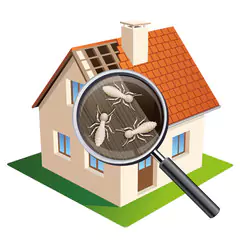When to Schedule a Termite Inspection
Before you schedule San Antonio Termite Inspection you should know what to expect. A good inspector will check for signs of infestation in the attic, basement, and crawl space. He will also check for cracks and expansion joints. He will also remove any items preventing him from reaching these areas. If you suspect that you might have a problem, it’s wise to schedule an inspection as soon as possible. This way, you’ll avoid paying for expensive repairs that may never be repaired.

A termite inspection is most beneficial when done early on in the infestation process. This will help you stop the termites before they cause any damage. While most termite inspectors recommend annual visits, it’s best to schedule one each year, especially in the spring, when the insects come out of hiding. You should also make sure your yard is kept weed-free to reduce the chance of having an infestation—the more regular your inspection, the better.
The inspector will also look for areas where termites have invaded before. If your home has had previous termite infestations, you should make sure you discuss the matter with the seller. If you find that the termites caused significant damage to your property, you should discuss this with the seller. If the seller repaired the problem, you should negotiate the cost of repairing it. Then, when you hire a professional to treat the termites, you can rest assured that they will drive them away for good.
You should schedule a termite inspection as soon as you suspect an infestation. It’s important to understand that termites can hide inside your home and that you’re not going to notice any symptoms until they cause extensive damage. Therefore, it’s essential to schedule a termite inspection as soon as you discover the presence of any evidence of termites. And don’t forget to get an estimate of the cost of repairs and treatments for any infested areas.
If you’re unsure whether you’re prone to termite infestation, it’s best to schedule a termite inspection. A termite inspection will determine whether there’s a risk of termites in the area. Moreover, a termite inspection will identify if your home has any wood-to-earth contact. A colony will have many soldiers and a queen, which is the most important.
A termite inspection will detect any areas where wood-to-earth contact is present. The termite inspection will also include a check of wooden structures. The inspector will check your home’s baseboards, walls, and windows and check for any signs of infestation. He will also check the walls and floors to ensure they’re free of termites. The inspector will look for any wood-to-earth contact during the inspection, such as where they’re attaching to siding or a fence post.
A termite inspection will also check for mud tubes. These tubes are small tubes that the pests use to travel. He will also check for any wood-to-soil contact. This is the easiest way for a termite to enter your home. When the termite inspection is complete, the inspector will check all these areas, including the foundation, cabinets, and closets. In addition, he will check the outside of the home, such as the yard, which is vital to prevent the termite from causing damage.
During the inspection, a home inspector will look for wood-to-earth contact, where termites can bridge from the ground to your home. Often, these areas are fence posts and other wooden structures. Generally, pressure-treated wood and natural wood are better-resistant to termite activity. The inspector will also check the surroundings of your property. This will help you determine any cracks or other signs of termite infestations.
During a termite inspection, a professional will check the home’s interior for mud tubes. Usually, termites build their homes in wood-to-earth contact, which is the most common way to get inside a building. During an inspection, an inspector will look for signs of mud tubes. During this process, the inspector will examine the exterior of the home and any mud tubes.
